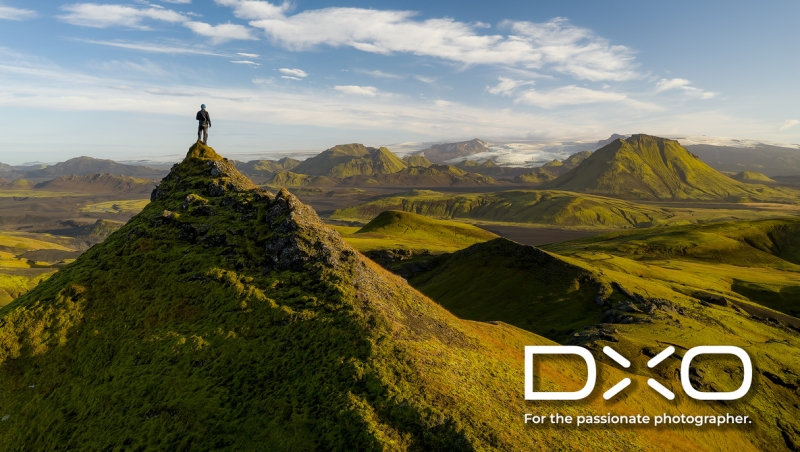Contents
We spent some time on the new DxO PureRAW 5 when it was announced in February, but now it’s out and I’ve had a chance to give it a run.
For those unfamiliar with the product, DxO PureRAW is a very powerful raw image processor. Now in its 5th generation, PureRAW is revered by photographers for its ability to clean up lens distortion and aberrations, remove noise, and sharpen images.
This latest version is claimed to push noise reduction and sharpening even further and now supports masks so you can target areas of an image for treatment, leaving other parts alone. PureRAW is not an image editor, but more of a preparer for your raw files, so you get more out of them.
DxO PureRAW 5 includes the third generation of DxO’s original neural-network-powered raw processing engine for Bayer and X-Trans sensors. Four years ago, DxO pioneered the use of machine learning to perform denoising and demosaicing simultaneously, unlocking the potential of AI and far exceeding man-made algorithms. Today, this latest DeepPRIME 3 incorporates a third process: residual chromatic shifts at a pixel level. Thanks to the data it draws from DxO’s exclusive DxO Modules, DeepPRIME 3 resolves chromatic aberration as part of the raw conversion process. DxO also says the software has gotten a significant speed boost.
Using DXO PureRAW 5
Once it is installed, there are multiple ways to use the software. Most photographers will use the software standalone and then hand the updated raw file to an editor. Many will use it as a Lightroom plugin, performing further processing steps on the image, then with the option of handing it off to Photoshop or another editor.
I tried the software with a variety of raw files and found this update powerful.
Here’s a shot taken with a Fuji X100VI:
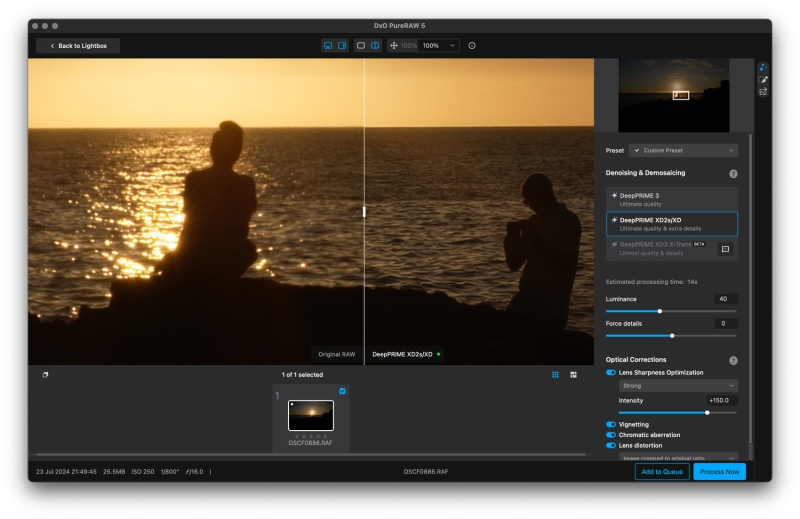
Taken at f/16 with an ISO of 250, the cleanup is pretty dramatic. The image is more focused (processed version is to the right of the split screen), which is easily visible in the water, the rocks, and the person.
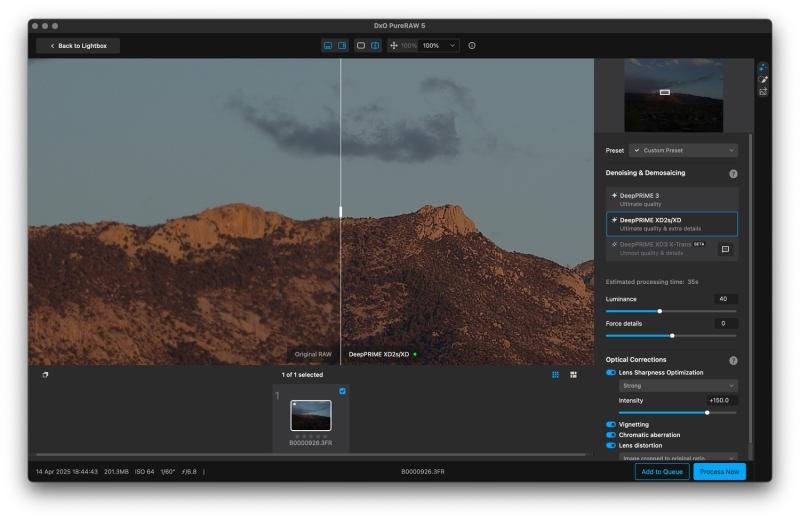
This is a Hasselblad X2D file, taken at ISO 64 in low light at sunset. The image has been considerably sharpened, and the noise has been cleaned up. As good as the Hasselblad is, it’s better after PureRAW treatment.
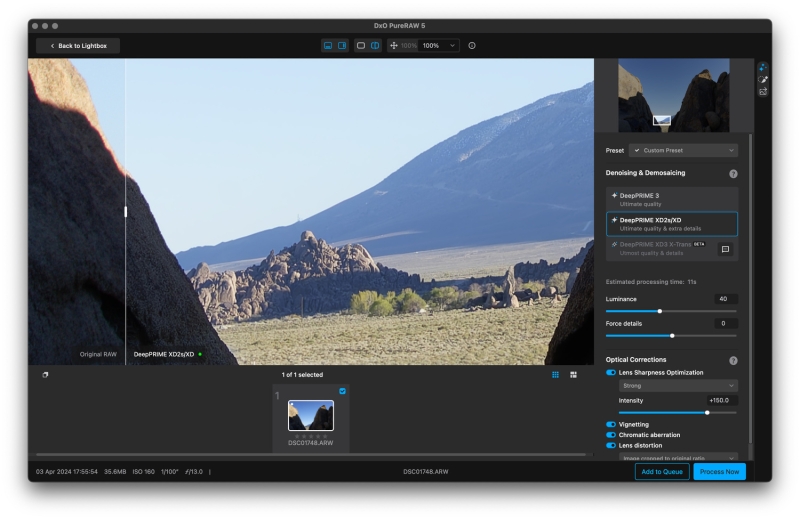
This is a Sony a7 IV file. Look at the rocks to the left, and you can see PureRAW has eliminated the chromatic aberration on the rock edge.

At the center part of the image, you can easily see how the rocks are cleaned up and de-noised.
We can only show you the JPEG here, but here’s an enlargement of the image above to get you a better look at the improvement.
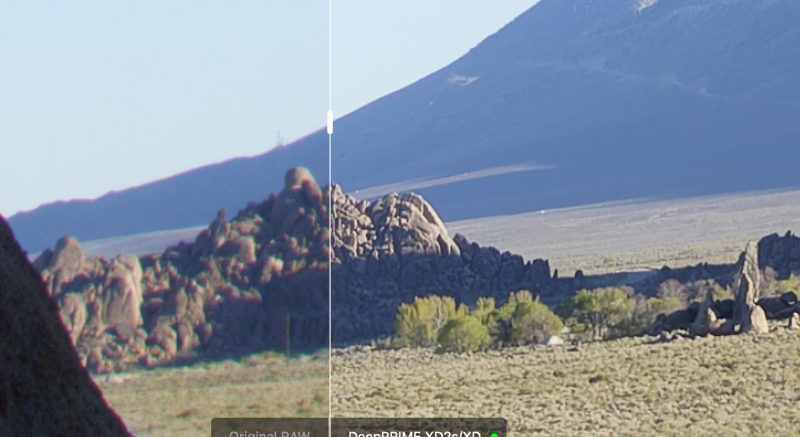
As mentioned, there are now manual controls that let you push the image a bit more if you desire, and I used the “strong” option for lens sharpness, finding it was effective and did no damage.
You could really see PureRAW earning its keep on this very low light image shot in Utah with a Lumix camera. There’s a lot of color noise which is easy to see, yet PureRAW eliminated the noise, saving this image.

Local Adjustments
One of the new features in PureRAW 5 is a masking function. Photographers now have the option to focus the levels of denoising and detail extraction on specific parts of the image and tailor levels of sharpening exactly as required.
Users can draw multiple masks and adjust the Force Details and Luminance sliders to dial exactly what they need. In addition, it’s possible to target sharpening more precisely, focusing on specific parts of the image.
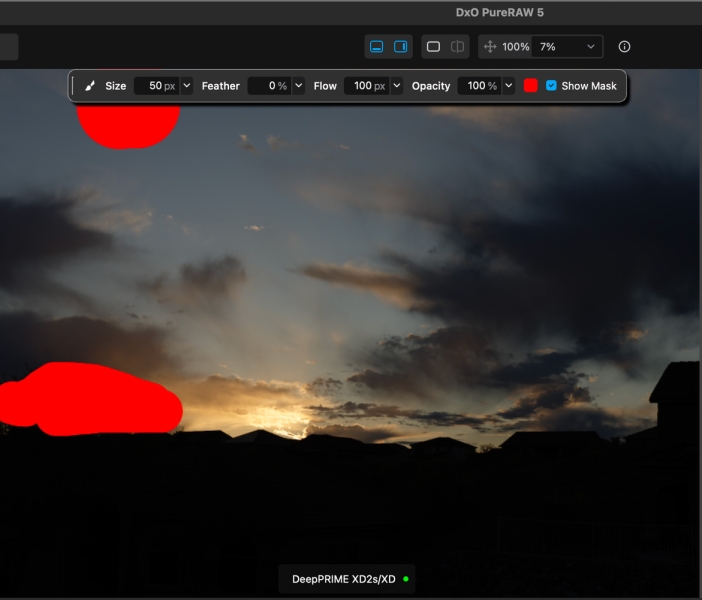
I tried it out, and it worked pretty well, but I thought it created needless work when it shouldn’t need to. The bracket keys don’t work to adjust the size of the brush, which is standard in most photo editors; you have to type the size into the interface, which is a needless task easily fixed with key commands. I’d love to see some AI put to work in this feature, like letting it select the sky or other objects, saving photographers the tedious painting. This feature feels a bit unfinished but could be very powerful if DxO rethought it a bit.
Summing Up
PureRAW 5 is an evolution of a product that was already a must-have for serious photographers. It improves every image that is fed to it. It can remove noise cleanly from high ISO images, sharpen images that were slightly defocused or soft because of optical issues. At the same time, as you could see, nasty optical aberrations are easily cleaned up.
I saw some slight improvements from PureRAW 4, and version 5 does push sharpening and noise reduction to a visible improvement. If you are satisfied with DxO 3 or 4, I would not upgrade to get the local adjustments feature yet, but I’m confident it will improve.
What I Liked
-
World-class noise reduction and sharpening
-
The best optical correction software there is
-
Easy to use
-
Excellent integration with Lightroom
What Could Be Improved
- The local adjustment feature seems half-baked. While I can see the need to make local adjustments with some images, the masks should include AI generation for things like the sky, buildings, or geographical features.
Where to Get PureRAW5
If you’d like to test it, a 14-day free trial is available from the DXO website.
A perpetual license for macOS and Windows machines can be purchased from the DxO website at the following prices:
- New license: $119.99
- Upgrade: $79.99
DxO PureRAW 5 comes with unlimited access and no subscription is required.
Fstoppers readers can save an additional 15% with the code FSTOPPERS15.
